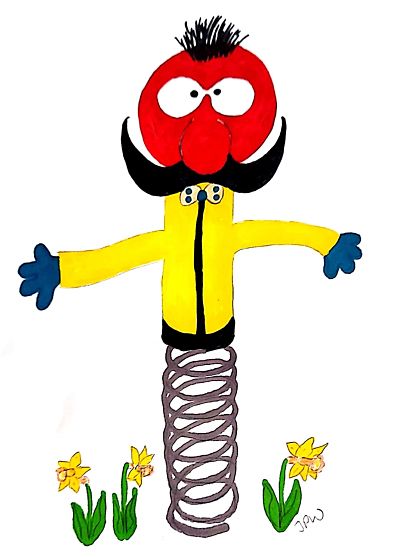 The clocks have just gone forward, the cherry blossom is out and Spring is in the air. All of which leads me to reflect on just how ‘springy’ we are – or at least, can be. We might not think of ourselves as inherently springy, a view perhaps encouraged by pictures of spines looking like a column of building blocks. And certainly, some of our natural bounce disappears through a lifestyle of sitting on chairs and hunching over desks.
The clocks have just gone forward, the cherry blossom is out and Spring is in the air. All of which leads me to reflect on just how ‘springy’ we are – or at least, can be. We might not think of ourselves as inherently springy, a view perhaps encouraged by pictures of spines looking like a column of building blocks. And certainly, some of our natural bounce disappears through a lifestyle of sitting on chairs and hunching over desks.
However, look at someone who hasn’t spent a large part of their life sitting at desks and such-like – perhaps an athlete, a toddler, or an adult from a non-industrialised culture – here you often see beautiful poise, as well as a fluidity of movement. You can see this same easy grace in many people who have invested time in learning and practising the Alexander Technique.
So why and how are we ‘springy’? We evolved to live in a field of gravity, developing elastic and adaptable muscles and connective tissues that work together with our bony central structure, as a finely tuned system to support us easily and effectively in the upright.
Effective postural support is essential for balance and to allow free and easy movement – you need stability of the central framework to organise the movement around. So we require a combination of strength and flexibility. Moreover, movement encompasses not only actions such as whole body displacement (walking etc) or moving a limb, but also the fine, intricate and almost imperceptible movement associated with balance. To achieve balance as well as those bigger movements, all our muscles need to be able to constantly adapt, and in a coordinated and appropriate way.
It’s very easy, through the habits we develop, to inadvertently hamper our natural elasticity, adaptability and coordination. We do it all the time in those small, largely unnoticed actions such as locking our knees, tensing through stress, and getting stuck in a ‘yo-yo’ of slumping and pulling ourselves up ‘straight’. Over time these ways of being become engrained and we end up stiffer and (perhaps paradoxically) weaker. To overcome this state requires change at a fundamental mind-body level. To put it simply, some muscles need to do a lot less work, particularly the bigger more superficial muscles that are often drawn on to hold ourselves up when the postural system is not doing that job sufficiently. Other muscles need to be enlivened to do more, particularly the deeper muscles along the spine that tend to have a more postural role. But how can this be brought about?
Learning and practising the Alexander Technique is an effective way of addressing those habits that interfere with our natural springiness. It leads to improvements in the adaptivity and distribution of postural tone (Cacciatore et al, 2020), so restoring our postural support. This change is a gradual process, brought about through a combination of taught thinking skills and experiential learning. The former include developing greater self-awareness, quietening of over-reactivity, and embodied spatial thinking. Experiential learning occurs through repeated positive experiences in lessons of moving, resting and supporting oneself better, facilitated through the gentle hands-on guidance of a STAT-qualified teacher.
During and after an Alexander lesson, the most common feeling that people experience is one of profound wellbeing – and some people attribute this benefit almost entirely to release of muscular tension. What is not always quite so obvious is the active engagement of the postural muscles throughout the lesson, even in such simple acts as standing or sitting. Ultimately the whole system is brought into a more harmonious state, where muscles are at a more appropriate level of tone for balance and movement, and tissues can gradually regain their natural elasticity.
And when that all gets going well, it certainly can put a spring in your step!
If you would like to read more about how training in the Alexander Technique may bring about the observed benefits, see:
Cacciatore TW, Johnson PM and Cohen RG. Potential mechanisms of the Alexander Technique: Toward a comprehensive neurophysiological model. Kinesiology Review 2020;9:199–213.

